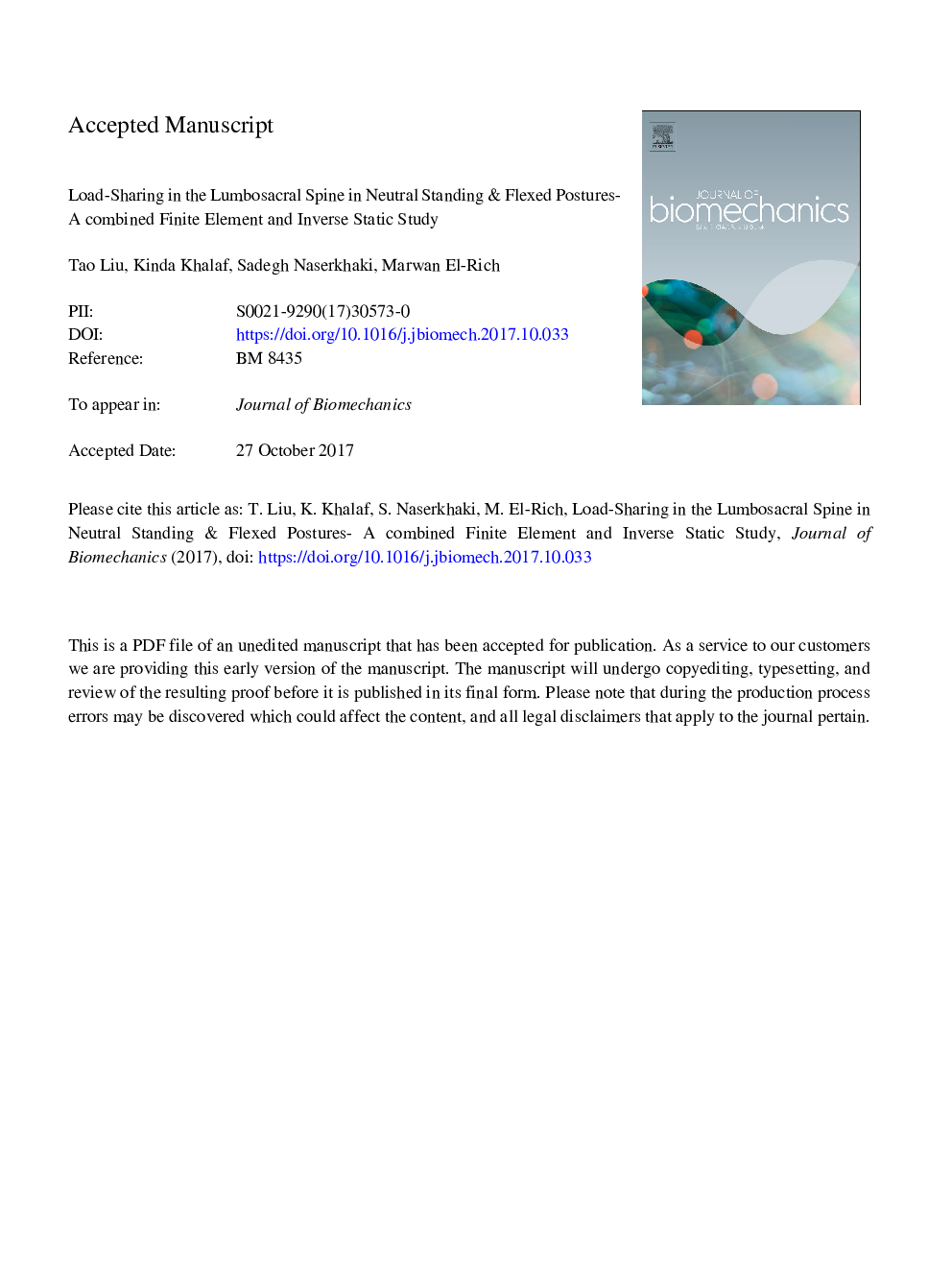| Article ID | Journal | Published Year | Pages | File Type |
|---|---|---|---|---|
| 7236449 | Journal of Biomechanics | 2018 | 20 Pages |
Abstract
This study investigated load-sharing in neutral standing and flexed postures using a detailed Finite Element (FE) model of the ligamentous lumbosacral spine, where muscle forces, gravity loads and intra-abdominal pressure, as predicted by a musculoskeletal model of the upper body, are input into the FE model. Flexion was simulated by applying vertebral rotations following spine rhythm measured in a previous in-vivo study, to the musculoskeletal model. The FE model predicted intradiscal pressure (IDP), strains in the annular fibers, contact forces in the facet joints, and forces in the ligaments. The disc forces and moments were determined using equilibrium equations, which considered the applied loads, including muscle forces and IDP, as well as forces in the ligaments and facet joints predicted by the FE model. Load-sharing was calculated as the portion of the total spinal load carried along the spine by each individual spinal structure. The results revealed that spinal loads which increased substantially from the upright to the flexed posture were mainly supported by the discs in the upright posture, whereas the ligaments' contribution in resisting shear, compression, and moment was more significant in the flexed posture.
Related Topics
Physical Sciences and Engineering
Engineering
Biomedical Engineering
Authors
Tao Liu, Kinda Khalaf, Sadegh Naserkhaki, Marwan El-Rich,
